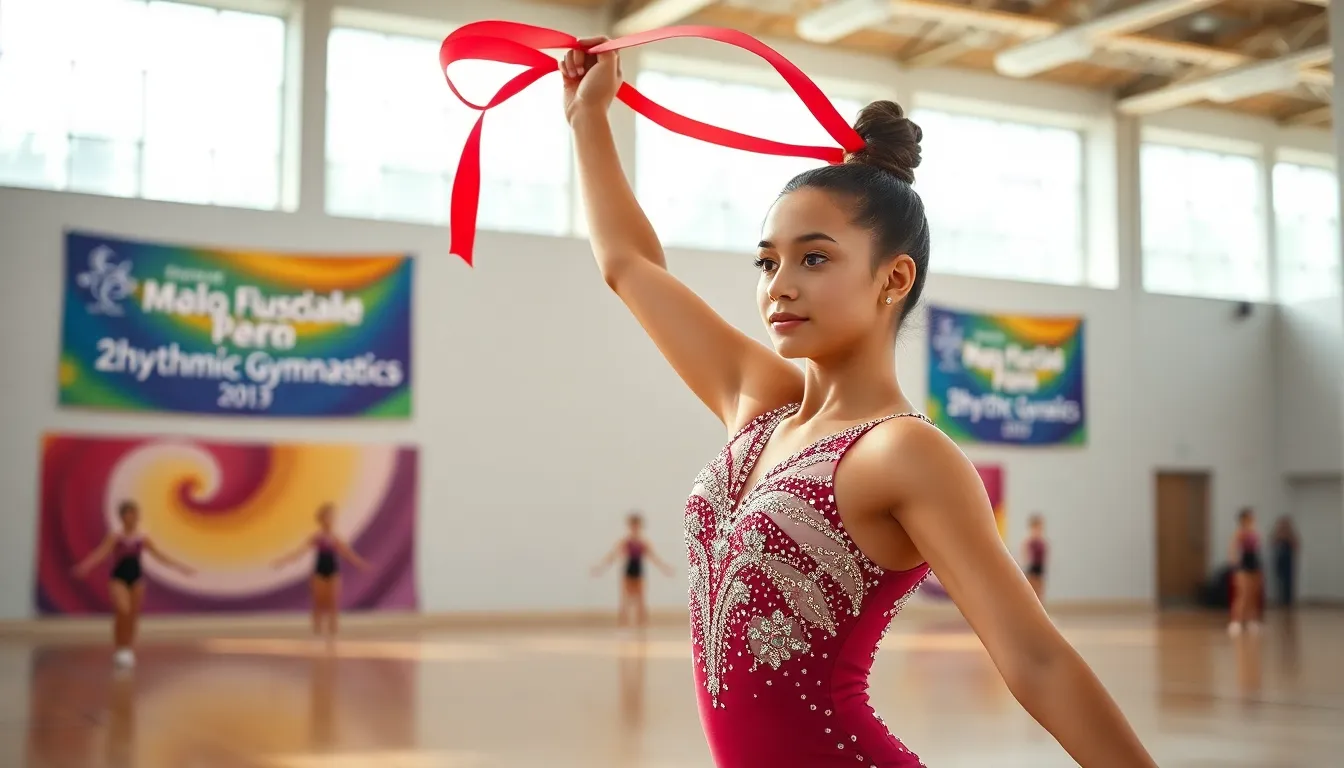Rhythmic gymnastics is a captivating blend of athleticism and artistry, where athletes demonstrate incredible flexibility, coordination, and strength. As the sport garners increasing attention globally, the latest competitions and emerging trends reveal the dynamic evolution of rhythmic gymnastics. This article will investigate into the current landscape, showcasing noteworthy competitions, star athletes, and the influences shaping this unique sport.
Table of Contents
ToggleOverview of Rhythmic Gymnastics

Rhythmic gymnastics is a unique discipline that combines elements of ballet, gymnastics, dance, and apparatus manipulation, typically performed by female athletes. This sport is characterized by its use of five apparatus: the hoop, ball, clubs, ribbon, and rope. Unlike traditional gymnastics, rhythmic gymnastics emphasizes choreography and artistic expression, making it visually compelling. Competitors perform routines set to music, showcasing their technical skills and creativity. Originating in the 19th century, the sport gained recognition in international competitions, including the Olympics, which further propelled its popularity.
Recent Competitions and Results
The 2023 Rhythmic Gymnastics World Championships recently showcased some thrilling performances. Held in Sofia, Bulgaria, this event marked a significant point in the rhythmic gymnastics calendar. Athletes from around the world competed fiercely, with standout performances from several nations.
Notably, the Russian team dominated the competition, securing gold medals in multiple categories. Their athletes demonstrated impeccable skill and synchronization, particularly in group routines. The Bulgarian team, bolstered by home support, also made a strong showing, earning several medals. Countries such as Italy and Japan demonstrated emerging prowess, indicating a shift in the competitive landscape.
Results from the championships have had a significant effect on rankings, and athletes are now gearing up for the upcoming qualification rounds for the 2024 Paris Olympics.
Top Athletes to Watch
Several athletes have distinguished themselves in the world of rhythmic gymnastics, garnering attention for their exceptional talent and performances.
- Dina Averina (Russia) – A two-time World Champion, Dina continues to set the bar high with her graceful routines and technical precision. Her ability to perform complex moves while maintaining expression makes her a fan favorite.
- Arina Averina (Russia) – Dina’s twin sister, Arina, is equally impressive, often competing neck and neck with her sibling. Their rivalry has added an exciting layer to competitions, captivating audiences worldwide.
- Linoy Ashram (Israel) – The reigning Olympic champion, Linoy Ashram, has emerged as a leading figure in rhythmic gymnastics. Her innovative routines and charismatic performances have won her numerous accolades.
- Yana Kudryavtseva (Russia) – Known for her distinctive style and technique, Yana is another athlete to watch. After a brief hiatus, her return to the sport has excited many fans, who are eager to see how she reintegrates into elite competition.
Emerging Trends in Rhythmic Gymnastics
Rhythmic gymnastics is undergoing various changes, reflecting broader societal shifts and technological advancements.
One emerging trend is the increasing incorporation of mixed routines that blend contemporary dance with traditional rhythmic elements. This evolution is not only appealing to younger audiences but also attracting broader interest in the sport.
Besides, inclusivity is becoming more prominent, with more athletes from diverse backgrounds entering the field. This trend enriches the sport with varying styles and interpretations of routines.
Also, social media platforms are playing a crucial role in bringing awareness to rhythmic gymnastics, allowing fans to engage with their favorite athletes and share their performances globally. The visual nature of social media makes it an effective tool for promoting the artistic beauty of the sport.
Impact of Technology on Training and Performance
Technology is reshaping how rhythmic gymnasts train and prepare for competitions. Coaches and athletes are increasingly utilizing video analysis to study routines in detail, enhancing performance feedback. This approach enables athletes to identify areas for improvement and refine their skills more effectively.
Wearable technology, such as motion sensors and heart rate monitors, allows for advanced training analytics, helping athletes optimize their routines and maintain peak physical conditioning. Also, virtual reality (VR) is starting to be explored as a training tool, giving athletes the ability to visualize their routines and understand spatial dynamics without the physical demands of practice.
These technological advancements provide athletes with an edge in performance, continually raising the standards within the sport.
Future of Rhythmic Gymnastics
Looking ahead, the future of rhythmic gymnastics holds promising potential. As international events prepare for the 2024 Paris Olympics, there is a growing emphasis on enhancing the visibility of rhythmic gymnastics through media partnerships, sponsorship deals, and community outreach.
Efforts to increase participation at grassroots levels will undoubtedly nurture a new generation of athletes, ensuring the sport’s longevity and evolution. Besides, the continued integration of technology will likely lead to even more refined training methods and performance analytics, resulting in increasingly sophisticated and creative routines.
With a strong commitment to innovation, rhythmic gymnastics is expected to flourish, drawing in new fans and retaining existing enthusiasts as it enters a new era.
Conclusion
Rhythmic gymnastics represents a fascinating intersection of sport and art, characterized by grace, athleticism, and creative expression. As recent competitions and emerging trends showcase the evolving landscape of rhythmic gymnastics, athletes continue to push boundaries, inspiring audiences worldwide. With advancements in technology and growing inclusivity, the future of rhythmic gymnastics looks brighter than ever. Stakeholders within the sport, athletes, coaches, enthusiasts, are poised to embrace these changes, ensuring rhythmic gymnastics remains vibrant and relevant on the global stage.



